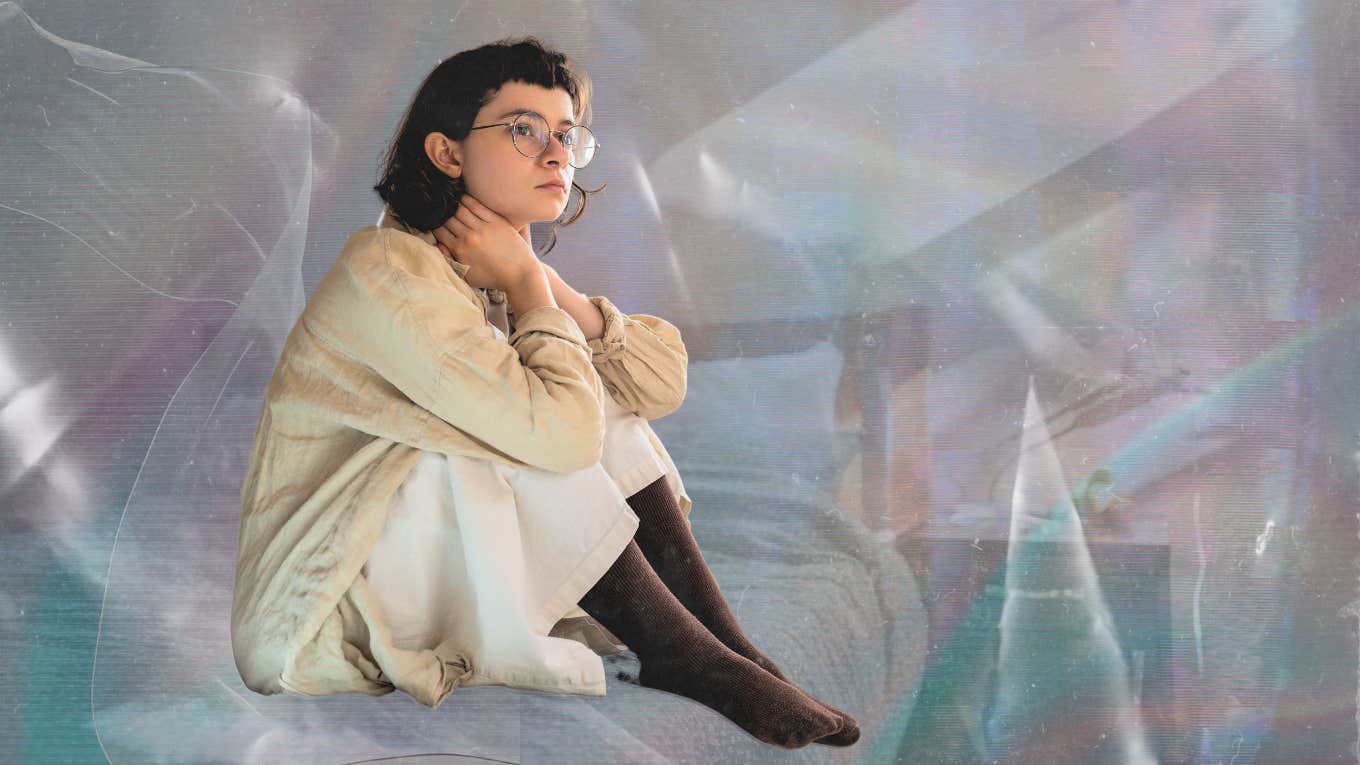'Good Girl Syndrome' Gave Me A Dissociative Disorder
I had officially become “The Good Girl,” and all it cost me was my sense of self.
 dimaberlinphotos | Canva
dimaberlinphotos | Canva I learned how to dissociate at seven years old.
My older brother, Scott, developed bipolar disorder when he hit puberty. After his first stint in an inpatient facility, he refused further treatment, and his episodes got worse and worse. I saw how other people’s emotions escalated his own. My father’s frustration made him angry. My mother’s anxiety was met with eye rolls and manipulation. His girlfriend’s innocent comments snowballed into explosive arguments.
One day, it hit me: If I don’t have emotions, he can’t use them against me. He’ll listen to me.
It worked.
Every time I compartmentalized my feelings and instead used unbiased, detached logic, Scott mirrored my calmness. He put down the scissors. He unlocked the bathroom door. He got into the ambulance. By the time I hit puberty myself, I’d successfully talked him out of several suicide attempts.
But my brother wasn’t the only person who responded well to this newfound talent. Everyone around me (parents, teachers, and friends) praised me for being calm. Brave. Mature. Reasonable. Selfless. Level-headed. Logical. I’d come so far from the stubborn, fiery child I’d been, they said — and everyone liked me better this way.
I had officially become “The Good Girl,” and all it cost me was my sense of self.
At 28, I was diagnosed with depersonalization-derealization disorder. It’s a dissociative condition characterized by feelings of severe detachment from one’s body and reality. In other words, I felt virtually nothing. My emotions and bodily sensations were gone. The world around me looked dull and dream-like. I no longer felt human.
According to the National Alliance on Mental Illness, women are more likely than men to be diagnosed with a dissociative disorder. Some studies speculate that it’s because women are more likely to seek help for mental health issues in the first place, but I’m not convinced.
From the very first time a girl acts up in a classroom, utters a vulgar word, makes a bold joke, throws a tantrum, or acts any way other than ladylike, she’s scolded for her emotions. Boys, on the other hand, will be boys. After all, hysteria is a “women’s disease.”
Since the second millennium BC, women’s emotions have been a problem — something to be “cured with herbs, sex or sexual abstinence,” or burned alongside them at the stake. Even now, if a female politician raises her voice over a male candidate, media headlines and comment sections call her hysterical. Aggressive. Manly.
The women history values most, on the other hand, are the women who stayed calm. Nurturing. Humble despite their strengths. Mother Teresa cared for the poor, the sick, and the vulnerable, the way a mother should. Rosa Parks didn’t stand in rage but sat in silence. Frida Kahlo disguised her pain in paint, and Emily Dickinson died without fame, her brilliance found on pages shoved into a desk drawer.
That’s what a calm, nurturing, humble woman can do. Imagine the things women could change with indignation. Passion. Conviction. Audacity. Defiance.
I no longer identify as “The Good Girl.”
Shortly after my diagnosis, I started an intensive psychotherapy treatment called EMDR which stands for eye movement desensitization and reprocessing. It uses bilateral stimulation to help the brain process traumatic events. I didn’t expect it to work — after all, nothing else had — but EMDR cracked me wide open.
Every Wednesday at 4:00 p.m., I focus on my worst memories and watch a glowing square bounce from left to right. My messiest emotions tumble out of me, finally demanding to be felt. I sob or shake or dry-heave into a waste basket next to my desk. And then, when it’s all over, the dissociation dissipates. I return to who I am.
After two years, I’m back in my body. I have boundaries and opinions and big emotions, and I do everything within my power to honor the stubborn, fiery child inside of me.
She is not everyone’s cup of tea. My social circle has shrunk considerably. Not everyone likes me better this way — and that’s OK. The people I keep around are the people who have seen my deepest, messiest emotions and know that I’m infinitely more powerful because of them.
Maria Cassano is a writer, editor, and journalist whose work has appeared on NBC, Bustle, CNN, The Daily Beast, Food & Wine, and Allure, among others.

